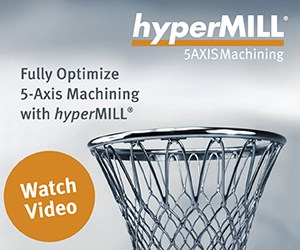Cleaning Q&A: Cleaning for ISO 16232
Meeting the requirements of ISO 16232 for the automotive industry.
Q. I would like to learn more about cleaning parts to meet the requirements of ISO16232 for the automotive industry. What are some companies that sell cleaning machines in the U.S. to meet this requirement?
A. The first thing to understand is that the ISO 16232 specification is a guideline for performing and validating cleanliness test procedures. The 10 volumes total about 100 pages of reading. Each section discusses a specific area.
Volume one reviews vocabulary, while volume two describes a method to fill your part with a fluid, agitate and then drain the part to measure internal cleanliness. Volume three details a method to determine internal cleanliness by flushing a part with a fluid. Volume four describes a variant of the previous method that also uses ultrasonics. Volume five is a method to insert the part into a simulated operating environment to extract contaminants. Volume six describes how to determine the mass of contaminants following the flushing and collection of debris. Volume seven details particle sizing once the part is flushed and the debris is collected. Volume eight discusses how to characterize the debris with the use of a scanning electron microscope. Volume nine details sizing particulates using an automated light particle counter. Finally, volume 10 provides guidance on the results of the test and analysis.
This background is useful to understand that a customer that simply places ISO 16232 on a specification or a print does not fully understand the background and requirements of this suite of specifications. Some of the methods are mutually exclusive, and simply placing a requirement of ISO 16232 on the customer is not sufficient. The customer must list the sections that they feel are applicable to the measurement and expression of cleanliness of their product. Only the customer can provide detail specifying the weight or particle size requirements (the pass/fail criteria). There is no specific requirement regarding the details of any of these test methods. For instance, there are no specifics in volume three that dictate the flow rate, fluid type, temperature or time for the flushing process.
One consistent requirement between all the methods, though, is that they need to satisfy an extinction curve to validate the method. In this case, the method is run three consecutive times on the same test article with results captured and measured individually. To validate the method, the results of the third test needs to be less than or equal to 10 percent of the total of the three tests. If it does not, the method is repeated up to six times in order to establish that the last method is less than the previous total.
Many items lack with this methodology (in addition to the general lack of understanding). For instance, it is not clear from the standard if the 10 percent requirement is only related to debris weight as I believe it should be. Cleanliness size is completely random and stochastic. The largest particulate stands an equal chance of coming out in the last flush as it does in the first. Also, there is not sufficient detail to describe how to implement a cleanliness method if you validate the fill, agitate and drain. Do you need to perform this test three times? With the flushing method, some have used a method to simply flush for three times the total time to validate the method. Another drawback with this requirement can be for extremely clean parts. If the lab is running this method and consistently coming up with only one or two tenths a milligram of contamination in the first flush, it is unlikely the third flush will be less than or equal to 10 percent of the total.
There is a significant amount of background information required to adequately prepare to achieve your customer’s cleanliness requirements (assuming they have adequately specified them). You may take several approaches to meeting these requirements including cleaning individual components or cleaning final assemblies. Look for cleaning line sources at PFonline.com in the Supplier Directory under Cleaning and Pretreatment.
Originally published in the January 2016 issue.
Related Content
New Coolant Designed for Automotive Parts Production
Choosing the right coolant is critical for productivity, economic efficiency and machining quality.
Read MoreArch Cutting Tools Acquires Custom Carbide Cutter Inc.
The acquisition adds Custom Carbide Cutter’s experience with specialty carbide micro tools and high-performance burrs to Arch Cutting Tool’s portfolio.
Read More4 Tips for Staying Profitable in the Face of Change
After more than 40 years in business, this shop has learned how to adapt to stay profitable.
Read More6 Ways Electrification is Shifting Automotive Manufacturing
Trends to watch at IMTS: A Tier One transmission supplier weighs in on how hybrid and electric vehicles are changing the requirements for automotive component producers.
Read MoreRead Next
IMTS 2024: Trends & Takeaways From the Modern Machine Shop Editorial Team
The Modern Machine Shop editorial team highlights their takeaways from IMTS 2024 in a video recap.
Read MoreThe Future of High Feed Milling in Modern Manufacturing
Achieve higher metal removal rates and enhanced predictability with ISCAR’s advanced high-feed milling tools — optimized for today’s competitive global market.
Read MoreIncreasing Productivity with Digitalization and AI
Job shops are implementing automation and digitalization into workflows to eliminate set up time and increase repeatability in production.
Read More


























